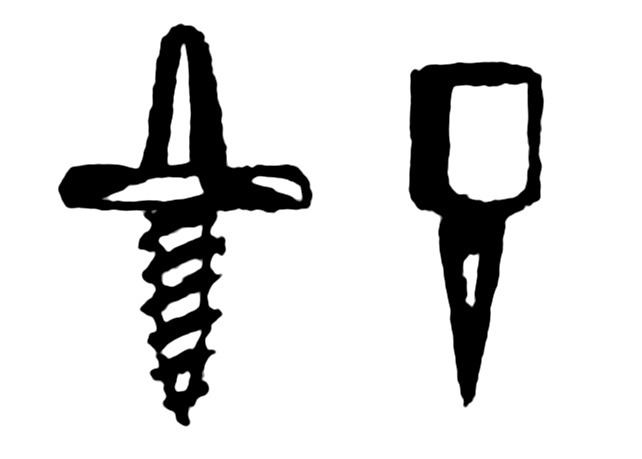 | ||
In footwear, a hobnail is a short nail with a thick head used to increase the durability of boot soles.
Hobnailed boots (in Scotland "tackety boots") are boots with hobnails (nails inserted into the soles of the boots), usually installed in a regular pattern, over the sole. They usually have an iron horseshoe-shaped insert, called a heel iron, to strengthen the heel, and an iron toe-piece. They may also have steel toecaps. The hobnails project below the sole and provide traction on soft or rocky ground and snow, but they tend to slide on smooth hard surfaces.
They have been used since antiquity for inexpensive durable footwear, often by workmen and the military, including the trench boots of World War I. Roman soldiers wore hobnailed sandals ("Caligae").
Important design work for the modern hobnailed boot was done during World War I, e.g. the "Pershing Boot" in the USA. Problems experienced in designing WWI US Army boots were:
Hobnailed boots were formerly used for mountaineering to grip on sloping rock surfaces. Mountaineering hobnailed boots tended to have large hobnails on the extreme edges of the soles and heels to grip small roughness on steeply sloping rock and on snow, particularly before crampons were used.
